Advertisements
Advertisements
प्रश्न
In ∆ABC, D is the mid-point of AB and P is any point on BC. If CQ || PD meets AB in Q (Figure), then prove that ar (BPQ) = `1/2` ar (∆ABC).
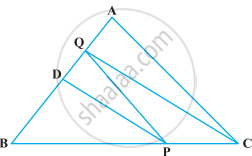
उत्तर

Given: In ∆ABC, D is the mid-point of AB and P is any point on BC.
CQ || PD means AB in Q.
To prove: ar (∆BPQ) = `1/2` ar (∆ABC)
Construction: Join PQ and CD.
Proof: Since, D is the mid-point of AB. So, CD is the median of ∆ABC.
We know that, a median of a triangle divides it into two triangles of equal areas.
∴ ar (∆BCD) = `1/2` ar (∆ABC)
⇒ ar (∆BPD) + ar (∆DPC) = `1/2` ar (∆ABC) ...(i)
Now, ∆DPQ and ∆DPC are on the same base DP and between the same parallel lines DP and CQ.
So, ar (∆DPQ) = ar (∆DPC) ...(ii)
On putting the value from equation (ii) in equation (i), we get
ar (∆BPD) + ar (∆DPQ) = `1/2` ar (∆ABC)
⇒ ar (∆BPQ) = `1/2` ar (∆ABC)
Hence proved.
APPEARS IN
संबंधित प्रश्न
In the given figure, ABCDE is a pentagon. A line through B parallel to AC meets DC produced at F. Show that
(i) ar (ACB) = ar (ACF)
(ii) ar (AEDF) = ar (ABCDE)
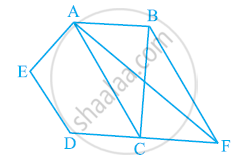
In the given figure, ar (DRC) = ar (DPC) and ar (BDP) = ar (ARC). Show that both the quadrilaterals ABCD and DCPR are trapeziums.
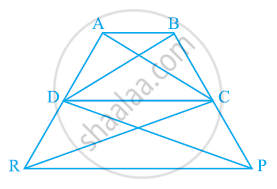
In the following figure, D and E are two points on BC such that BD = DE = EC. Show that ar (ABD) = ar (ADE) = ar (AEC).
Can you answer the question that you have left in the ’Introduction’ of this chapter, whether the field of Budhia has been actually divided into three parts of equal area?
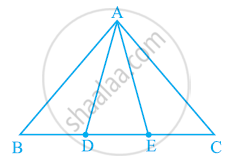
[Remark: Note that by taking BD = DE = EC, the triangle ABC is divided into three triangles ABD, ADE and AEC of equal areas. In the same way, by dividing BC into n equal parts and joining the points of division so obtained to the opposite vertex of BC, you can divide ΔABC into n triangles of equal areas.]
P and Q are respectively the mid-points of sides AB and BC of a triangle ABC and R is the mid-point of AP, show that
(i) ar(PRQ) = 1/2 ar(ARC)
(ii) ar(RQC) = 3/8 ar(ABC)
(iii) ar(PBQ) = ar(ARC)
In a ΔABC, P and Q are respectively the mid-points of AB and BC and R is the mid-point
of AP. Prove that :
(1) ar (Δ PBQ) = ar (Δ ARC)
(2) ar (Δ PRQ) =`1/2`ar (Δ ARC)
(3) ar (Δ RQC) =`3/8` ar (Δ ABC) .
ABCD is a parallelogram and X is the mid-point of AB. If ar (AXCD) = 24 cm2, then ar (ABC) = 24 cm2.
X and Y are points on the side LN of the triangle LMN such that LX = XY = YN. Through X, a line is drawn parallel to LM to meet MN at Z (See figure). Prove that ar (LZY) = ar (MZYX)
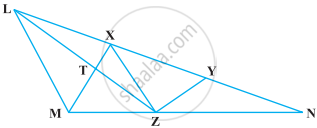
The area of the parallelogram ABCD is 90 cm2 (see figure). Find ar (ΔBEF)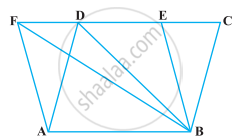
A point E is taken on the side BC of a parallelogram ABCD. AE and DC are produced to meet at F. Prove that ar (ADF) = ar (ABFC)
In the following figure, CD || AE and CY || BA. Prove that ar (CBX) = ar (AXY).

